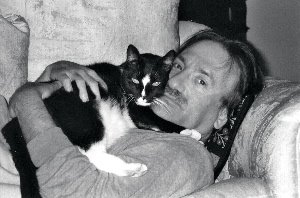Light summer reading pick:
The Language Instinct: How the Mind Creates Language by Steven Pinker. I’ve learned a lot from this book. Pinker debunks much of the common wisdom about language, like the idea that primitive peoples have primitive language. The languages of Stone Age peoples are as rich and grammatically complex as those of any more “advanced” civilizations. And rather than a Tower of Babel, all languages have so much in common (there is “a single mental design underlying them all”) that a visitor from another planet would view all human speech as a single language with various dialects. Pinker is also good at putting the “language mavens” in their place. A language “sage” like William Safire “misjudges the linguistic sophistication of the common speaker and as a result misses the target in many of his commentaries.”
Language, according to Pinker, is an adaptive trait that arose through natural selection. Pinker explains the genius of Charles Darwin’s concept in a novel and accessible way, e.g., “Darwin noted that his theory made strong predictions and could easily be falsified. All it would take is the discovery of a trait that showed signs of design but that appeared somewhere other than at the end of a lineage of replicators that could have used it to help in their replication. One example would be the existence of a trait designed only for the beauty of nature, such as a beautiful but cumbersome peacock tail evolving in moles, whose potential mates are too blind to be attracted to it. Another would be a complex organ that can exist in no useful intermediate form, such as a part-wing that could not have been useful for anything until it was one hundred percent of its current size and shape. A third would be an organism that was not produced by an entity that can replicate, such as some insect that spontaneously grew out of rocks, like a crystal. A fourth would be a trait designed to benefit an organism other than the one that caused the trait to appear, such as horses evolving saddles. In the comic strip Li’l Abner, the cartoonist Al Capp featured selfless organisms called shmoos that laid chocolate cakes instead of eggs and that cheerfully barbequed themselves so that people could enjoy their delicious meat. The discovery of a real-life shmoo would instantly refute Darwin.”



